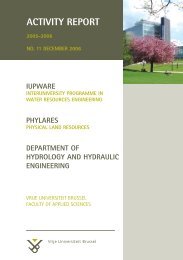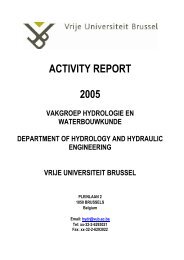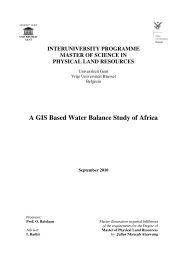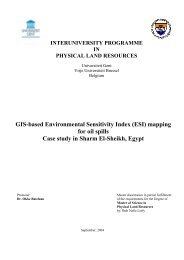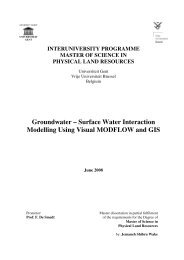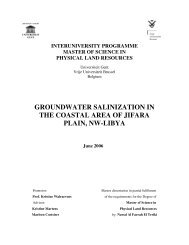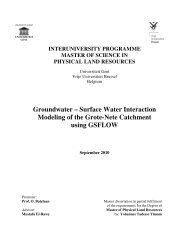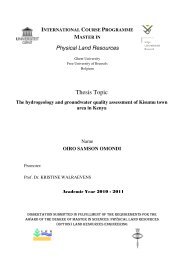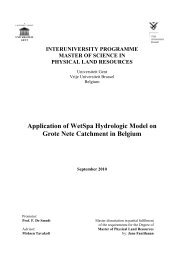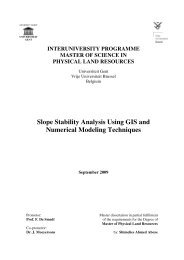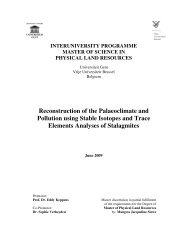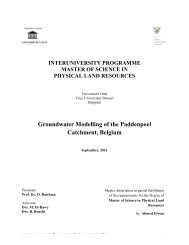C O N T E N T S - Physical Land Resources - Vrije Universiteit Brussel
C O N T E N T S - Physical Land Resources - Vrije Universiteit Brussel
C O N T E N T S - Physical Land Resources - Vrije Universiteit Brussel
Create successful ePaper yourself
Turn your PDF publications into a flip-book with our unique Google optimized e-Paper software.
Measuring and Modelling the Impact of Urban Dynamics onHydrologyThe department of Hydrology and Hydraulic Engineering is participating in the MAMUDproject. MAMUD is an acronym for Measuring and Modelling Urban Dynamics: Impact onQuality of Life and Hydrology. The MAMUD project is funded by the Belgian Science PolicyOffice in the framework of the STEREO II programme. This research project is acooperation between three Belgian universities: University of Ghent (Department ofGeography), Université de Liege (Unité de Géomatique) and the <strong>Vrije</strong> <strong>Universiteit</strong> <strong>Brussel</strong>(Department of Geography and Department of Hydrology and Hydraulic Engineering),further partners are the Flemish institute for technological research (Centre for IntegratedEnvironmental Studies) and the Joint Research Centre of the European Union (<strong>Land</strong>Management and Natural Hazards Unit). Prof. F. Canters of the <strong>Vrije</strong> <strong>Universiteit</strong> <strong>Brussel</strong>,Department of Geography is the promoter of the project. The MAMUD project covers afour year period (2007-2011). Its major goal is to investigate how earth observation cancontribute to a better monitoring, modelling and understanding of urban dynamics, andits impacts on the urban and suburban environment. Our contribution to the project willfocus on the impact of the urban growth on the runoff. To this end, detailed informationon urban land cover, obtained from time series of remotely sensed data, as well as futureland-use patterns, linked to alternative planning scenarios, will be used as input forspatially distributed runoff modelling. The rainfall-runoff WetSpa model will therefore beadapted in this research to make optimal use of the remotely sensed land-coverinformation. A case study is being developed for the River Tolka, situated in Ireland nearthe city of Dublin. Rapid urban growth in the Tolka basin has been the cause of recentflooding events of the River Tolka, causing immense damages in some highly populatedarea of the Dublin region. Calibration of the WetSpa model will be based on a dataassimilation approach, making optimal use of information with respect to land cover andevapotranspiration, obtained from the available time series of remotely sensed data,including the in this project established time-series of maps of sub-pixel imperviousness.<strong>Land</strong>-use prediction methodologies will be developed by partners in the MAMUD projectand tested on the Greater Dublin area. Based on the outcome of these land-usesimulations, the future risk of flooding under extreme rainfall conditions, for differentdevelopments scenarios, will be assessed using an adapted version of the WetSpa model.J. Dams and O. Batelaan- 52 -




